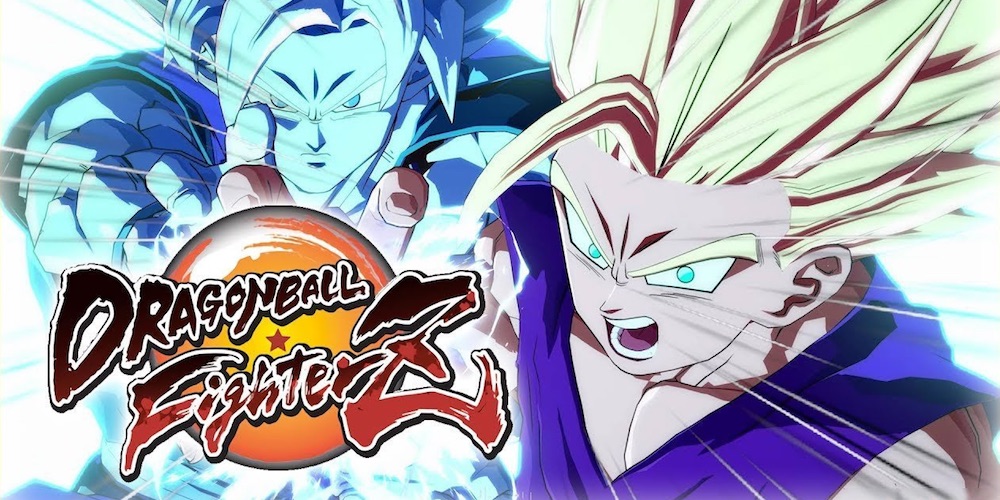
The excitement around Arc System Works developing a modern Dragon Ball fighter is justified. There hasn’t been a significant, traditional fighting game based on the licence since Burst Limit in 2008, with console and PC Dragon Ball games sticking to the 3D arena-style gameplay of the Tenkaichi, Raging Blast and Xenoverse games. On handhelds, though, there’s been a gradual trickle of 2D Dragon Ball fighters, and here’s where there’s reason to be sceptical of the forthcoming FighterZ. Arc System Works isn’t new to the DB franchise, having released the Supersonic Warriors games for GBA and DS, and more recently in 2015, Extreme Butoden on the 3DS. Each of these games, especially Extreme Butoden, boast beautiful, excellently animated sprites, but shallow, disengaging combat. With the closed beta of FighterZ, I was hoping to see evidence this trend has been broken and that gorgeous good looks aren’t its only asset.

So let’s dig into the combat. With no command lists or practice scenarios available in the beta, experimenting to figure out how everything works was a little tricky while Trunks was slashing up my face. However, the fact that I came out of the limited games I played with a pretty solid understanding of the game bodes well for its accessibility. That’s not to say it’s as shallow as its predecessors. FighterZ plays very much like a traditional fighting game, with light, medium and heavy attacks and special attacks used in combination or succession for varying results. Super moves seem to be in no short supply, with each fighter tending to have a few abilities at their disposal, with many varying in range or strength depending on the attack button with which they’re triggered. It’s usually easy to remember which input triggers which attack when they coincide directly with each button’s command; something I think is really important for the kind of game in which people will want to mess around with a lot of different characters without having to dig too deeply into their command list.
Certain special moves expend an energy bar that fills while landing hits. Of course, in a Dragon Ball game, you can manually charge up this power, too. Because FighterZ is such a fast-moving game, there’s really no good opportunity to build up some Ki. Games like the Budokai titles back on PS2 leant pretty heavily on the economy of energy and utilising and second you could to build up some power for your next special attack. In FighterZ, that’s a dynamic that seems missing. I can see some quick charge-ups being used in high-level play, but for most the best bet will be pounding on the enemy. This energy also affords a teleport, moving you behind your opponent immediately. As a quick way to close a gap or escape from an enemy assault, it’s a simple system to keep the action moving.

Arc System Works have made a lot of wise decisions here to anchor Dragon Ball to the skeleton of a traditional fighter. Having a universal throw trigger a flurry of blows that the enemy can counter with their own is a great idea, and the way so many character attacks and movements are specifically referential to the source material shows a huge deal of thought and care put into making these two things fuse successfully. My only mechanical concern at this stage is that the deliberate, ranged approach may not be very feasible here with things moving so quickly and there being so many ways to get close to your opponent. If that’s the price to remedy the impersonal picking-up-rocks-and-throwing-them kind of fights of the Xenoverse games, though, then it’s very much worth the cost.
Of course, I have to discuss the presentation of FighterZ, too. As has been apparent since the game was revealed, this is the best-looking Dragon Ball game ever. In recent years, characters in DB games have had this shiny, stocky look that really isn’t representative of the original art. The solid colours and stark shadows of Toriyama’s style seem to be the trickiest pieces to communicate with a 3D model, and that makes sense. If Krillin’s gi is consistently the same colour on the chest as it is on the legs, then how do you communicate depth when the two overlap? Arc System Works knows how. It truly feels like each frame of character movement is individually animated and meticulously applied to a 3D model to perfectly match the player’s perspective. It doesn’t feel like there’s a secret here that elevates the visuals over that of the Xenoverse games, for example, it just feels like they’ve put in the colossal amount of laborious work to nail it.
As far as music goes, everything feels right, too. The original soundtrack is appropriately quick and percussive, with the kind of thrashy riffs that most Dragon Ball games tend to employ. There’s a tone set immediately from the start screen that carries through each fight, and the main theme, in particular, is notably memorable. I’m assuming and desperately hoping for English voice acting when the game releases in February, but there have been some pretty high-profile DB games to come without it.
Dragon Ball FighterZ looks set to be the best Dragon Ball game in a long time, but I’ve definitely been let down before. How well the final game teaches its mechanics will be a pretty significant weight on the quality of the game for me, and the original story could definitely help or hurt it depending on how it plays out. Judging only what the beta has on display, though, this will finally be the Dragon Ball game I, and many others, have been waiting for for the last decade.











